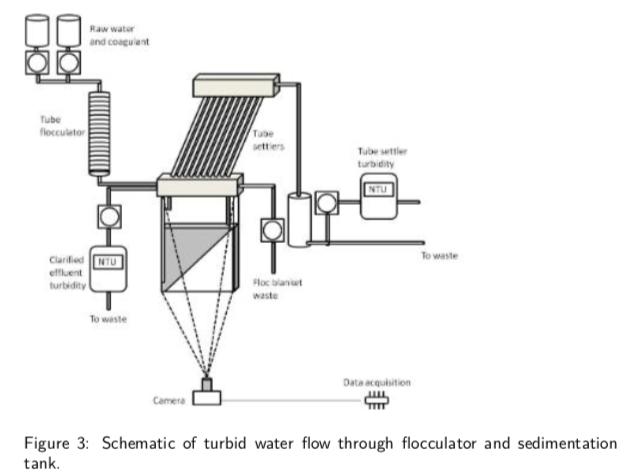Jill Freeman, Mahina Wang, Saied Khan, Matthew Hurst
Abstract:
A floc blanket is a dense, fluidized bed of particles that forms in the sedimentation tank and helps to reduce effluent turbidity by trapping small flocs and reduces clean water waste through less frequent draining of the sedimentation tank. Floc resuspension is necessary for floc blanket formation so that flocs are recirculated through the tank instead of settling on the tank bottom as sludge. Research was conducted to examine mechanisms for floc resuspension. Parameters important for floc resuspension include energy of the jet stream on its upward flow path, position of the jet as it interacts with solids, and hydrodynamic pressure of the jet compared to hydrostatic pressure of the returning solids. Several geometries were tested with red dye and fully built floc blankets to observe the jet path and velocity profile around the bottom geometry. Best results are achieved through geometries that preserve jet momentum, especially through splitting the jet flow, and geometries that maintain a high jet velocity when contacting solids. Later, quantitative measurements were taken to determine floc blanket performance for various bottom geometries.

